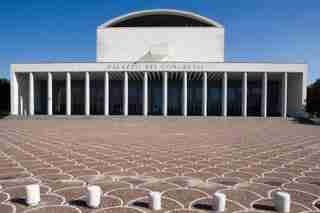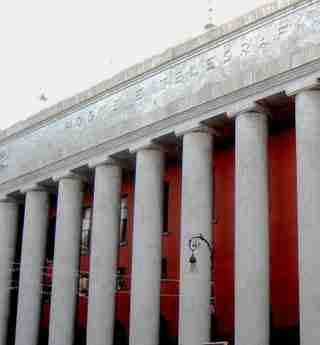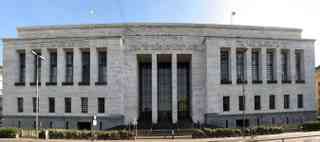The early 20th century was one of the bloodiest periods in history, due in large part to the rise of nationalism and anti-Semitism in Western Europe. Yet the chaos of the period was not reflected in the architecture being built at the time. Quite the opposite, actually, as the structures designed and erected during the era of Fascist ideology—from the late 1920s through the '40s—were constructed with an emphasis on symmetry and simplicity. The often large and imposing structures, championed by leaders like Benito Mussolini and Adolf Hitler, were intended to stoke patriotic fervor. From the Nazi Congress Hall in Nuremberg, Germany, to the Milano Centrale railroad station in Italy, AD examines the few Fascist-inspired buildings that are still intact today.

Palazzo dei Congressi , which is located in the southern section of Rome, was another building planned for the 1942 World's Fair. The symmetrical structure was designed by Italian architect Adalberto Libera. The area the construction stands is called EUR, for Esposizione Universale Roma. The planned World's Fair never took place due to World War II.

Palazzo delle Poste di Palermo is the post office in Palermo, the capital city of Sicily. The large building was designed by Italian architect Angiolo Mazzoni and completed in 1934. The exterior, which is highlighted by ten columns standing nearly 100 feet tall, was built of reinforced concrete.

Designed by Italian architect Marcello Piacentini and completed in 1940, the Palazzo di Giustizia (Justice Palace) is located in Milan, Italy. The building is still used as a courthouse.
The Palazzo della Civiltà Italiana , also known as the Palace of Italian Civilization or simply the Colosseo Quadrato, was completed in 1937. Designed by Italian architects Giovanni Guerrini, Ernesto Bruno La Padula and Mario Romano, the structure was built as part of a larger scheme for the 1942 World Fair, which was planned to be held in Rome.
Located in Nuremberg, Germany, the former Nazi Congress Hall was built by popular Nazi architect Ludwig Ruff. The structure, which was where Hitler addressed thousands of party faithful, was constructed next to the Dutzendteich Lake.
Built in 1938, Kehlsteinhaus (better known as Eagle's Nest) was Hitler's lair in the Bavarian Alps. Originally built as a teahouse for the German dictator, the dwelling sits atop the Kehlstein Mountain, some 6,000 feet aboveground.
Designed by Italian architect Marcello Piacentini and completed in 1940, the Palazzo di Giustizia (Justice Palace) is located in Milan, Italy. The building is still used as a courthouse.
A view inside the Milano Centrale railroad station. Built in 1931 by Ulisse Stacchini, Milan's main train station was created to replace an antiquated structure. Today, the station is one of the most traveled in Europe, accommodating some 120 million passengers each year.
